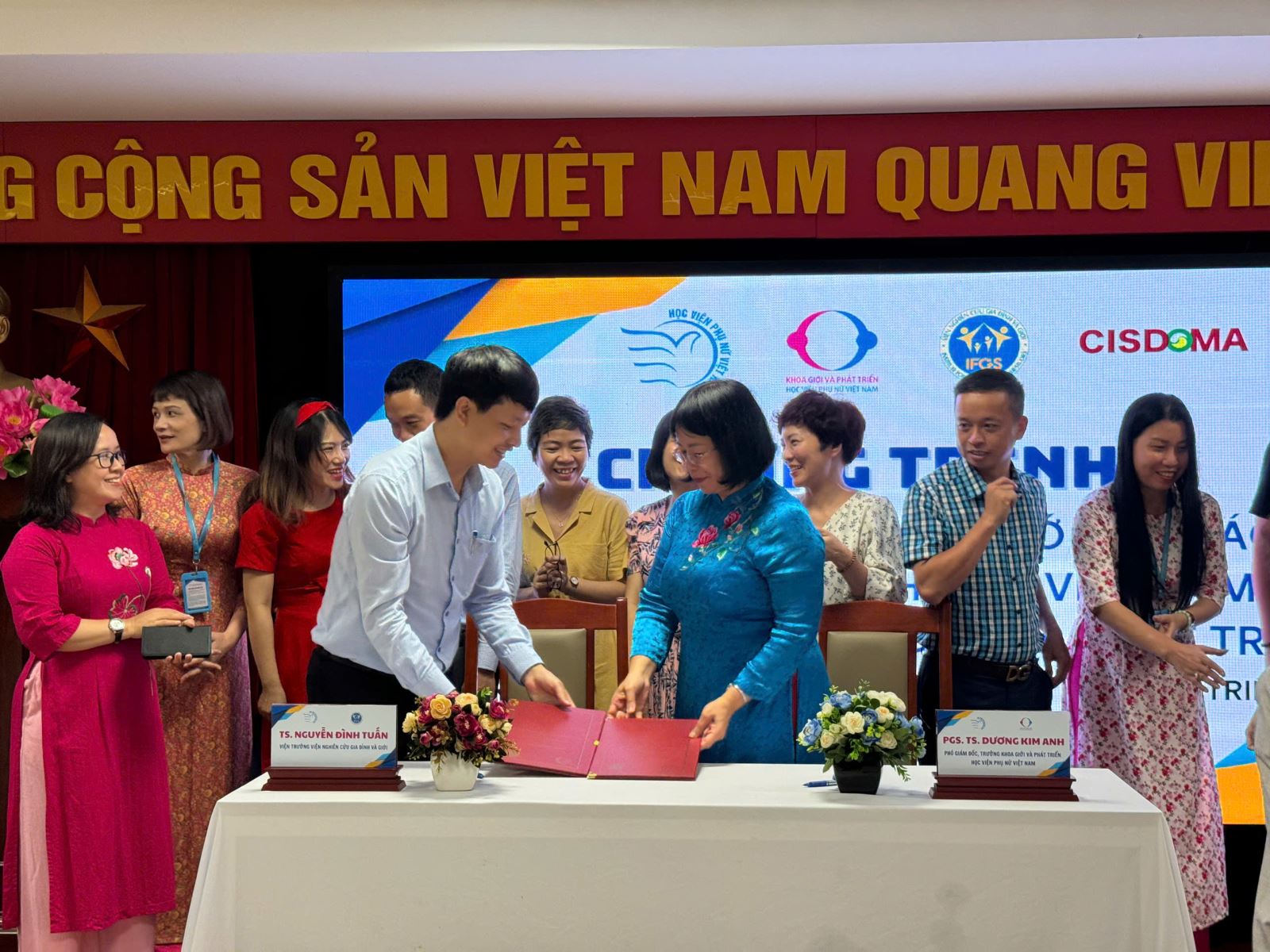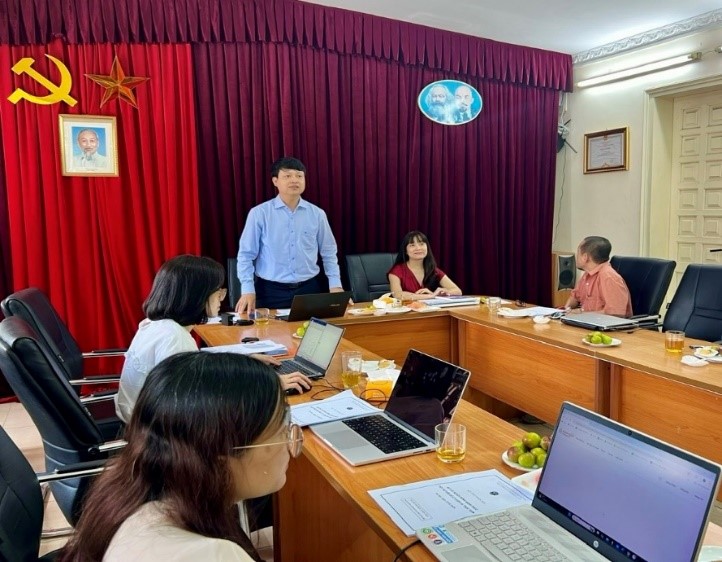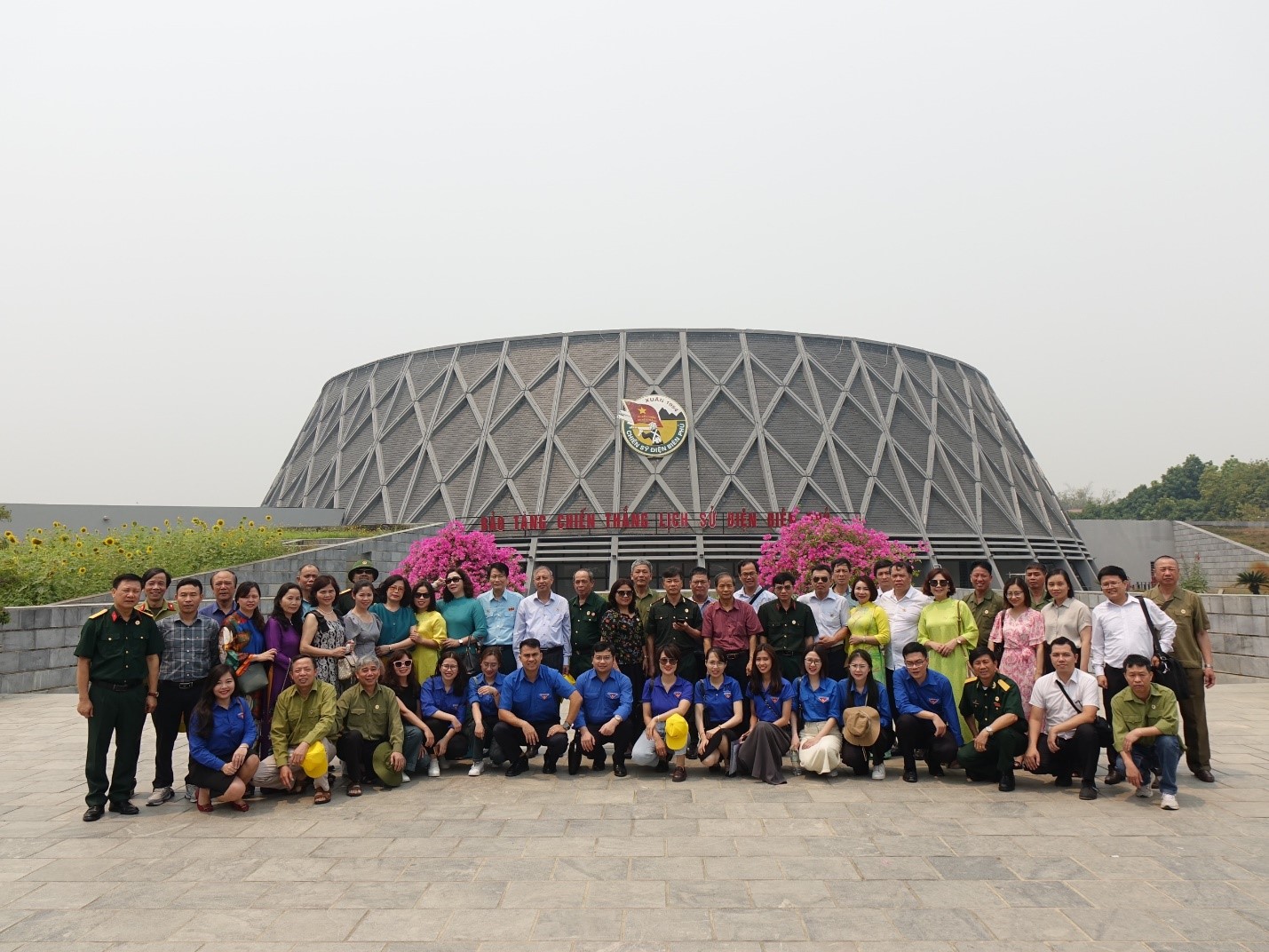Điểm nhấn
-
 Hội thảo “Thực trạng người Việt Nam hồi hương từ Vương quốc Anh giai đoạn 2014 - 2023”
Hội thảo “Thực trạng người Việt Nam hồi hương từ Vương quốc Anh giai đoạn 2014 - 2023”
-
 Lễ Ký kết biên bản ghi nhớ hợp tác giữa Học viện Phụ nữ Việt Nam với Viện Nghiên cứu Gia đình và Giới
Lễ Ký kết biên bản ghi nhớ hợp tác giữa Học viện Phụ nữ Việt Nam với Viện Nghiên cứu Gia đình và Giới
-
 Hội thảo khoa học: "Bộ chỉ số gia đình hạnh phúc: Một số vấn đề lý luận và thực tiễn"
Hội thảo khoa học: "Bộ chỉ số gia đình hạnh phúc: Một số vấn đề lý luận và thực tiễn"
-
 Tọa đàm khoa học "Vận dụng lý thuyết trong nghiên cứu khoa học xã hội"
Tọa đàm khoa học "Vận dụng lý thuyết trong nghiên cứu khoa học xã hội"
-
 Hội nghị Đối thoại giữa Chi ủy, Lãnh đạo viện với đảng viên, viên chức và người lao động Viện nghiên cứu Gia đình và Giới 6 tháng đầu năm 2024
Hội nghị Đối thoại giữa Chi ủy, Lãnh đạo viện với đảng viên, viên chức và người lao động Viện nghiên cứu Gia đình và Giới 6 tháng đầu năm 2024
-
 Chi bộ Viện nghiên cứu Gia đình và Giới tổ chức sinh hoạt chuyên đề: Đoàn kết thống nhất trong Đảng theo tư tưởng Hồ Chí Minh
Chi bộ Viện nghiên cứu Gia đình và Giới tổ chức sinh hoạt chuyên đề: Đoàn kết thống nhất trong Đảng theo tư tưởng Hồ Chí Minh
-
 Cuộc thi “Nét đẹp và giá trị gia đình Việt Nam” hưởng ứng Ngày Gia đình Việt Nam 2024
Cuộc thi “Nét đẹp và giá trị gia đình Việt Nam” hưởng ứng Ngày Gia đình Việt Nam 2024
-
 Hội Cựu chiến binh, Đoàn Thanh niên Viện Hàn lâm Khoa học xã hội Việt Nam đi thăm lại chiến trường xưa Điện Biên Phủ
Hội Cựu chiến binh, Đoàn Thanh niên Viện Hàn lâm Khoa học xã hội Việt Nam đi thăm lại chiến trường xưa Điện Biên Phủ
- Tổng mục lục Tạp chí 2023
-
 Viện nghiên cứu Gia đình và Giới phát động phong trào thi đua và ký Giao ước thi đua năm 2024
Viện nghiên cứu Gia đình và Giới phát động phong trào thi đua và ký Giao ước thi đua năm 2024
Liên kết web
Số lượt truy cập
80
4743598
Chi tiết tạp chíNo. 1 - 2022
Economic Contribution of Males and Females in Vietnamese Households in the Modern Life
The article is written based on secondary data extracted from the “Vietnam Household Living Standards Survey” data set of General Statistic Office (GSO-2014) including data of 9,399 households with 23,543 observations who are males and females at the age of 15-60. The paper presents the results of the comparison and multi-dimensional comparative analysis on the production labor participation as well as economic contributions in the household of men and women in Vietnam. The comparison among the target group is the head of the household, showing that the average income of the male household-head is similar to that of the female household-head. Meanwhile, survey data in the group of people after working age shows the difference in total income. Accordingly, considering female and male at the age of 55-60 with their household’s total revenue, the households with post-working female have higher total revenue than households with male at the same age male. These evidences suggest that labor participation differs significantly between men and women after they have passed age 55. In the broken marriage group with single status is a popular phenomenon, the personal income and total income of female households are approximately 2.5 times higher than men’s. The article also discusses the need to mainstream gender in policies for employees in order to promote equality in labor and employment, and increase economic contribution to the family and society in Vietnam.
The process of Doi moi and economic growth in Vietnam in recent years has opened up many more job opportunities for people, including ethnic minority people. In addition to traditional agricultural jobs, ethnic minority workers have more formal and informal job opportunities and can create jobs for themselves and expand production. In addition, the development of tourism in ethnic minority areas in recent years with alternative tourism forms such as community based tourism, sustainable tourism has opened up opportunities for ethnic minorities participating in the formal labor market. However, responding to the requirements of new job opportunities is challenging for ethnic minority workers, who previously had low level of professional technical and educational qualifications. This paper analyzes the challenges of responding to new labor market opportunities for ethnic minority workers in Ha Giang province, Vietnam in terms of adaptability to job requirements and self-employment. The research uses both quantitative and qualitative methods, focusing on two ethnic minority communities that account for a large number of people, the Hmong and the Tay. The study shows that the ability of ethnic minority workers to respond to the employment requirements is low, and the self-employment capacity is also a big challenge for ethnic minority workers. They lack capital, technology, soft skills and disciplines. Besides, ethnic minority workers lack knowledge about the market, leading to production and business failures.
Gender Role in Mass Media Advertising
There is continuing interest in gender topics and gender roles in the traditional publications and modern electronic media. This research aims to discuss the role gender discrimination in advertisements on mass media in contemporary Vietnam society through gender images on publications/ posters/TVCs, celebrities and interviewing script writers. Cause-and-effect theories or questions have been used to study about gender roles and the role gender discrimination, which were inspired from day-to-day lives. This study examines those relationships and analyzes the position of celebrities through advertising to light up people’s awareness about gender roles. These findings have strongly confirmed the gender discrimination in advertisement, including KOLs statements; in which mass media products that are portraying women as ornaments or caregiver, while men often appear with leadership or power roles.
Clients’ Satisfaction on the Counselling Services of the Migrant Resource Centre in Nghe An Province
IOM supports the establishment and operation of a few Migrant Resource Centres (MRCs) globally, as a “one-stop shop” for information and services for migrants in both source and destination countries. In Vietnam, the MRC was first established in Nghe An Province in June 2016 through a partnership between IOM Vietnam and the Women’s Union of Nghe An Province. From April 2018 to September 2019, MRC Nge An was relocated to the premise of the Employment Service Centre (ESC) Nghe An. This paper will analyze the characteristics of MRC’s clients, their expectations and needs when coming to MRC and the evaluation of MRC’s clients about MRC's counselling activities including: The relevance, the effectiveness, the impacts and the sustainability of Migrant Resource Center Nghe An. The evaluation report was developedbased on the results of the survey with 100 customers coming to MRC (questionaire and in-depth interview) and the client database of MRC Nghe An with 1,203 clients.
Ethnic minorities, characterized as a vulnerable group in Vietnam, have benefited from the country's labor market participation and economic growth. But still, many factors and mechanisms have influenced the widening of the ethnic poverty gap in Vietnam. They include the household resources, such as education, vocational training, labor market information, and their efficiency of using such resources. In addition, social networks have been studied as channels to transfer opportunities for labor market participation, migration, trades, and innovation in technology, which have narrowed the gap in the country. However, social networks may also transfer risk aversion, creating more barriers for the ethnic minorities to participate in the labor market and then negatively increasing the ethnic gap. Therefore, using the qualitative approach on a small-scale survey in a multi-ethnic community, the study investigates the impacts of social networks on the ethnic poverty gap. The study focuses on how social networks affect the risk aversion of labor market participation of ethnic minorities. The survey informs positive impacts of social networks, as measured by an increase in total household resources (e.g., information, advice, finance, human resources, consensus on the labor market participation). Outreach-based social relationships beyond the village, especially non-family, non-frequent-contact relationships, are channels of those impacts. Nevertheless, most social networks of ethnic minorities have only close bonding social relationships that provide public information, not such as competitive and experiential information from non-family, non-frequent-contact bridging social relationships. As a result, several negative impact mechanisms are found: (1) social networks raise the risk aversion to new livelihood; (2) family relations, close relatives tend to offer not competitive information.

